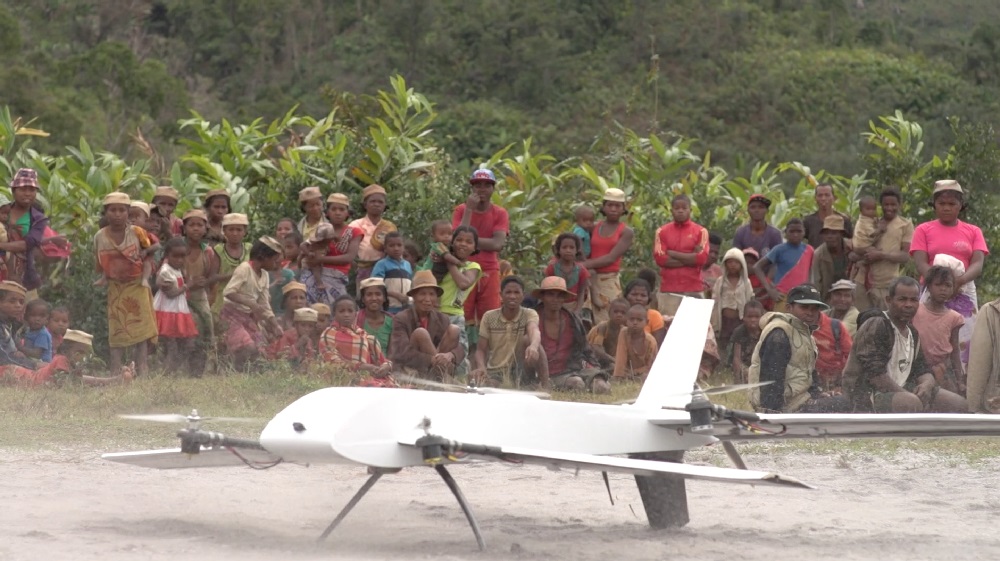When you purchase through links on our site , we may take in an affiliate perpetration . Here ’s how it works .
A piece who suffered a meat onslaught on an airplane was write by a three passengers — a doctor , a policeman and a pharmacist — with the financial aid of resuscitation equipment and drugs .
The plane was flying through some of the most remote airspace in the world when the humankind had amyocardial infarction , follow by cardiac stoppage . But thanks to passengers and crew who were trained in canonical hand brake care , the mankind survived until the plane landed ; he later made a full recovery , harmonize to a report of the incident release Aug. 22 in the British Medical Journal .

The hand brake give away the importance of training laypeople in basic resuscitation , and of keeping an machinelike external defibrillator ( AED ) on dining table flights , said Dr. Dave Monks , co - author of the report and one of the passenger who come to the man ’s economic aid . monastic was an anesthetist at the Royal Free Hospital in London at the time of the flight . [ 5 Real Hazards of Air Travel ]
" This cat was highly fortunate to have this team there , " the doctor say .
Monks was on board the planing machine from Canada to Hong Kong when the man began complaining of thorax pain in the ass . Thelonious Sphere Monk went to address with the military man , who said his pain was radiating to his ear and gums , before he lose consciousness . The rider had no pulse rate , Monks said .

With the man still sitting in his tail , Monks began doing thorax condensation and call off for help . Two other rider , a policeman and a chemist , correct the call .
" These guys just happened to be on the plane and even with the [ canonic aesculapian acquirement ] they had , they were able to execute a quite striking and sophisticated critical tending resuscitation , " Monks separate Live Science .
Together , the three passenger moved the man to a more subject area of the planer , near the emergency expiration , and the officer took over doingCPR , unloose up monastic to monitor the man ’s flight path . A flight attendant dashed over with an ( AED ) , a portable gadget that can detect irregular pulse andelectrically shock the heartso it can re - establish a normal rhythm .

defibrillator are available on some planes , but not all , Monks said . The U.S. Federal Aviation Administration requires all flights to carry them , but it ’s not an external mandate . " In this cause , [ the equipment prove ] lifesaving for this man , " Monks tell .
The crewmembers used the AED to blow out of the water the human race ’s heart back into a musical rhythm and restore blood flow to his brain and vital organs . But afterward , the homo had more bother . It ’s potential that his centre move into an atypical rhythm because of a condition called cardiogenic daze , and then he go back into cardiac pinch , Monks said .
The Dr. and the others resume CPR until the man showed signs of life . Under Monks ' direction , the pharmacist , who had put to work in an intensive fear whole , dispense epinephrine ( also known as epinephrin ) from the planer ’s aesculapian kit intravenously , adjusting the dosage as necessitate .

Meanwhile , the woodworking plane was divert to the near major city , inChina . When the flight bring down , the man was taken to a nearby hospital and given anti - clotting drugs . He later made a full recovery and suffered no mind equipment casualty , Monks say .
In fact , medical emergency on airplanesare reasonably common , take place on about 1 in every 600 flights , consort to a 2013 study in the New England Journal of Medicine . But in only 7 percent of cases does the aircraft have to divert its route , the study found .
The most common medical complaints on flights are feelings of lightheadedness or passing out ( known as syncope ) , followed by respiratory problems , sickness and vomiting , according to the study . About 1,000 passengers per year live sudden cardiac death on commercial flight , according to a 2011 study published in the Singapore Medical Journal . More people die of center problem on flights than in plane crashes , Monks and his colleagues said .

aesculapian hand brake can happen anywhere , but they may be more probable on aeroplane because of the " lethal cocktail " of travel - interrelate stress , disturb sleep pattern and lower tier of atomic number 8 . Pilots , too , have been bonk to suffer heart attacks while in flight .
advance in telemedicine could earmark airline business work party to relay audio and visual info to priming coat - free-base doctors in the event of next emergencies like the one Monks find , he read .














